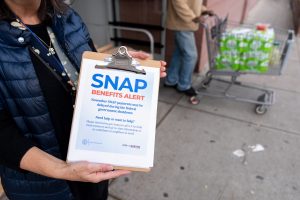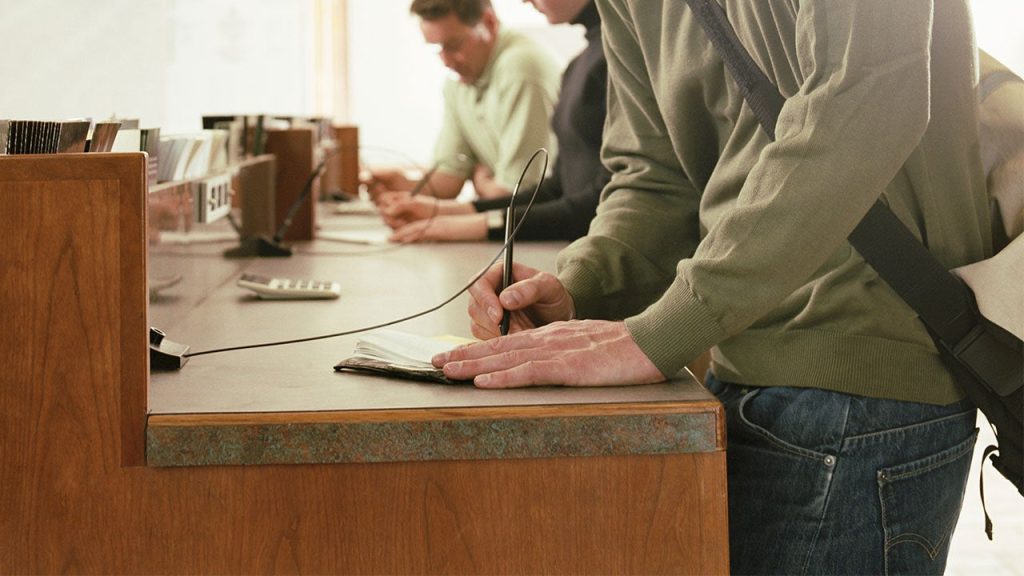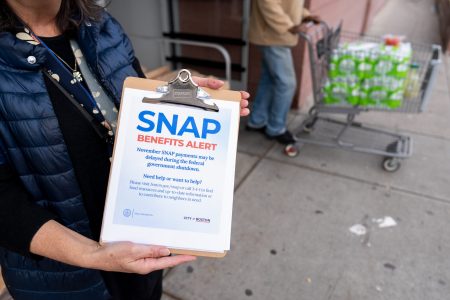- Unlike personal checks, money orders are prepaid, ensuring recipients receive the full payment without the risk of insufficient funds.
- Money orders can be purchased without a bank account from locations like post offices, grocery stores and banks.
- While generally affordable, money orders have purchase limits and digital money orders are relatively uncommon, though some providers may offer them.
Money orders offer a secure, prepaid alternative to cash and personal checks, making them a valuable tool for anyone needing to send money without a bank account or risking bounced payment.
Whether you’re mailing funds, paying a bill or conducting a transaction with someone you don’t know well, money orders provide peace of mind through guaranteed funds and a verifiable paper trail.
What is a money order?
Money orders are a safe alternative to checks or cash. These paper documents offer guaranteed funds, but unlike a check, they’re prepaid and not tied to a bank account.
When you purchase a money order, you pay the full amount upfront plus a small fee, and the issuing institution guarantees the funds to the recipient.
Money orders serve as a trusted payment method when cash isn’t practical and personal checks aren’t accepted or desired. They’re particularly valuable for situations where you need to send money through the mail, make payments to unfamiliar parties or conduct transactions without revealing your bank account information.
Since the funds are guaranteed by the issuer, recipients can be confident they’ll receive payment, while senders benefit from having a paper trail and proof of payment.
How money orders work
To purchase a money order, consumers go to an issuing institution, such as a post office, grocery store or bank, and pay the amount they need in the money order plus the issuer’s fee.
Generally, money orders can be purchased for any amount up to a certain amount. At the post office, for example, you can send up to $1,000 with a single money order anywhere within the U.S.
With the purchase of a money order, the sender receives a paper document, similar to a check, that includes the payment amount. The document requires the sender to fill out some information, which may include:
- The payee’s name and address
- The payment amount
- The sender’s name and address
- A memo for what the payment is for
Once the fields are completed, the money order is sent to the payee. The payee can cash or deposit it like a check without the risk of it bouncing since the full amount was already paid.
When you purchase a money order, always retain the receipt or stub provided by the issuer. This receipt contains a tracking number that allows you to verify whether your money order has been cashed or deposited. Most issuers offer online tracking services where you can check the status of your money order using this number, providing peace of mind and helping resolve any issues if the money order is lost or stolen.
Pros and cons of money orders
Money orders have benefits and drawbacks. Understanding both will help determine if money orders are your best choice.
Pros of money orders
- Safe and secure for both the sender and the payee
- Accessible to anyone, with or without a bank account
- Can typically be used for any expense
Cons of money orders
- Money order issuers often charge fees to purchase and cash money orders
- Money orders must typically be purchased in person
- Slower than electronic payments
- Difficult to track and replace if lost
When to use money orders
In certain circumstances, money orders can be safer or more convenient than personal checks or cash.
Some of these circumstances include:
- You don’t have a bank account. Money orders are prepaid and don’t require you to have a checking account. They allow you to pay bills and receive payments without being tied to a financial institution.
- You want to send money in the mail. If you aren’t comfortable mailing a check that contains your bank account information and you’d rather not mail cash, sending a money order can be safer. Like a check, only the recipient can cash it.
- You don’t want to bounce a check. Money orders are prepaid, so there’s no chance that the bank can return it due to insufficient funds.
- You want to keep personal bank account information private. Money orders don’t reveal your bank account information to the payee, offering a degree of privacy that checks may not provide.
Money orders vs. cashier’s checks
Money orders are more accessible and affordable for smaller transactions, while cashier’s checks offer enhanced security and higher limits for larger purchases. Here’s a full breakdown:
| Feature | Money order | Cashier’s checks |
| Cost | $1-$5 typically | $10-$15 typically |
| Maximum amount | Usually $1,000 per money order | No limit (bank dependent) |
| Where to purchase | Post offices, grocery stores, gas stations, banks, credit unions, sometimes online | Banks and credit unions only |
| Account required | No bank account needed | Bank account may be required |
| Payment method | Cash or debit card | Funds withdrawn from your account or cash |
How much do money orders cost?
The cost of a money order — in addition to the amount to be sent — depends on where it’s purchased, but fees generally range from $1 to $5.
Here’s what you can expect to pay at various places for a domestic money order:
| Institution | Cost per money order |
|---|---|
| U.S. Postal Service | $2.35 for amounts up to $500, $3.40 for amounts of $500.01 to $1,000 |
| Walmart | Up to $1 |
| Kroger | Depends on your region, but you’ll save money with a Kroger Shopper’s card |
| Chase Bank | $5 |
| Wells Fargo | $5 |
| Truist | $5 |
| *Fees may vary by state. | |
International money orders may not always be available. For example, the U.S. Postal Service stopped selling international money orders in 2024, though you can still cash them through October 2025. If you’re looking to send money internationally, you may want to consider more affordable alternatives, such as an ACH transfer.
How to cash a money order
You can cash a money order at several different locations, including banks, grocery stores or check-cashing stores. You’ll typically get the best deal by cashing it at the same place it was issued. That’s because some institutions charge a fee for cashing orders from other issuers.
Money orders can also be deposited directly into a checking or savings account by bringing them to the bank.
To cash a money order:
- Take the money order to a bank, credit union, grocery store or post office.
- Sign the back of the money order — be sure to sign it at the counter and not beforehand.
- Present your ID and the money order to the teller or clerk.
- Receive payment. If the order is deposited into a bank account, it may take a couple of days for the funds to become available.
FAQs about money orders
-
Money orders are generally a safe alternative to cash or checks, since only the payee can cash or deposit them for the amount printed on the face. As long as you save the receipt, you can track your payment and may be able to recover any funds if they are lost, stolen or damaged. There are plenty of scams involving money orders. Make sure to verify the funds with the issuer if you aren’t sure it’s legitimate. Report any suspected fraud to the Federal Trade Commission.
-
Money orders technically don’t have an “expiration date,” but there is typically a period of time after which a non-refundable service charge may be deducted from the principal amount.
-
Contact the issuer immediately and bring your receipt to the place you purchased it. The receipt contains the money order number and other essential information needed to track and replace it. Most issuers can cancel a money order and issue a replacement, but this service typically costs between $15-$20 and could take up to 60 days to process.
Bottom line
Like checks, money orders are paper documents that allow the purchaser to specify the payee and amount. But unlike checks, they are prepaid, so they can function similarly to cash. There’s no risk of a money order bouncing; if it’s lost or stolen, you can often receive a refund or cancel it. Money orders are a secure, inexpensive way to send or receive funds.
Why we ask for feedback
Your feedback helps us improve our content and services. It takes less than a minute to
complete.
Your responses are anonymous and will only be used for improving our website.
Help us improve our content
Read the full article here












